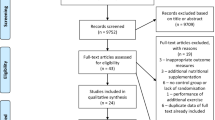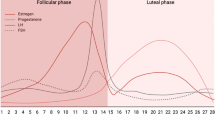Abstract
Despite an increasing clinical interest in female pelvic floor function, there is a lack of data with respect to the knowledge of average adult women about the physiological role of the pelvic floor and their ability to contract pelvic floor muscles (PFM) voluntarily. It was the aim of our study to evaluate the percentage of PFM dysfunction in adult women and the impact of risk factors, such as age, body mass index (BMI), number of children delivered, and the influence of previous PFM training. A total of 343 Austrian adult women (mean age, 41.2 ± 14.6 years; range, 18–79 years), selected at random, were examined to test their ability to contract the PFM. The examination was carried out by three independent gynecologists during the course of a routine gynecological visit. The ability to contract the PFM voluntarily or involuntarily was assessed by digital intravaginal palpation with the patients in a supine position. The muscle strength was graded according to the Modified Oxford Grading Scale by Laycock. A high percentage (44.9%) of the women was not able to voluntarily perform a normal PFM contraction. In only 26.5%, an involuntary contraction of the pelvic floor was present before an increase in intra-abdominal pressure. The inability to contract the PFM did not correlate with women’s age but revealed a weak relationship with the number of childbirths and the patient’s BMI. A significant correlation was found between the Oxford Grading Scale rating and the patient’s report about previous PFM training.


Similar content being viewed by others
References
Messelink B, Benson T, Berghmans, Bo K, Corcos J, Fowler C, Laycock J, Huat-Chye Lim P, van Lunsen R, Lycklama a Nijeholt G, Pemberton J, Wang A, Watier A, Van Kerrebroeck P (2005) Standardisation of terminology of pelvic floor muscle function and dysfunction: report from the pelvic floor clinical assessment group of the international continence society. Neurourol Urodyn 24:374–380
Talasz H, Gosch M, Enzelsberger H, Rhomberg HP (2005) Geriatrische Patientinnen mit Harninkontinenz-Symptomen und ihre Kontrolle über den Beckenboden. Z Gerontol Geriatr 38:424–430
Davis K, Kumar D (2003) Pelvic floor dysfunction: a conceptual framework for collaborative patient-centred care. J Adv Nurs 43(6):555–568
Hagen S, Stark D, Maher C, Adams E (2006) Conservative management of pelvic organ prolapse in women. Cochrane Database Syst Rev 4:CD003882
Hay-Smith EJC, Bo K, Berghmanns LCM, Hendriks HJM, de Bie RA, van Waalwijk van Doorn ESC (2004) Pelvic floor muscle training for urinary incontinence in women (Cochrane Review). In: The Cochrane Library, Issue 2, 2004. Wiley, Chichester, UK
Schuessler B, Laycock J, Norton P, Stanton S (2002) Pelvic floor re-education: principles and practice. Springer, London
Frawley HC, Galea MP, Phillips BA, Sherburn M, Bo K (2006) Reliability of pelvic floor muscle strength assessment using different test positions and tools. Neurourol Urodyn 25:236–242
Frawley H, Galea MP, Phillips BA, Sherburn M, Bo K (2006) Effect of test position on pelvic floor muscle assessment. Int Urogynecol J 17:365–371
Laycock J, Standley A, Crothers E, Naylor D, Frank M, Garside S, Kiely E, Knight S, Pearson A (2001) Clinical guidelines for the physiotherapy management of females aged 16–65 with stress urinary incontinence. Chartered Society of Physiotherapy, London
Laycock J (1994) Clinical evaluation of the pelvic floor. In: Schuessler B, Laycock J, Norton P, Stanton S (eds) Pelvic floor re-education: principles and practice. Springer, London, pp 42–47
Schuessler B (2002) (39–41) Aims of pelvic floor evaluation. In: Schuessler B, Laycock J, Norton P, Stanton S (eds) Pelvic floor re-education: principles and practice. London, Springer
Bo K, Larsen S, Oseid S, Kvarstein B, Hagen R, Jorgensen J (1888) Knowledge about and ability to correct pelvic floor muscle exercises in women with stress urinary incontinence. Neurourol Urodyn 7(3):261–262
Dietz HP, Steensma AB, Vancaillie TG (2003) Levator function in nulliparous women. Int Urogynecol J Pelvic Floor Dysfunct 14(1):24–26
Dietz HP, Wilson PD, Clarke B (2001) The use of perineal ultrasound to quantify levator activity and teach pelvic floor muscle exercises. Int Urogynecol J Pelvic Floor Dysfunct 12(3):166–169
Kegel AH (1948) Progressive resistance exercise in the functional restoration of the perineal muscles. Am J Obstet Gynecol 56:238–249
Theofrastus JP, Wyman JF Bump RC, McClish DK, Elser DM, Robinson D, Fantl JA (1997) Relationship between urethral and vaginal pressure during pelvic muscle contraction. Neurourol Urodynam 16:553–558
Thompson J, O’Sullivan P, Briffa NK, Neumann P (2006) Assessment of voluntary pelvic floor muscle contraction in continent and incontinent women using transperineal ultrasound, manual muscle testing and vaginal pressure measurements. Int Urogynecol J Pelvic Floor Dysfunct 12(3):166–169
Devreese A, Staes, F, De Weerdt W, Feys H, Van Assche A, Penninckx F, Vereecken R (2004) Clinical evaluation of pelvic floor muscle function in continent and incontinent women. Neurourol Urodyn 23(3):190–197
Bo K, Finckenhagen B (2001) Vaginal palpation of pelvic floor muscle strength: intertester reproducibility and comparison between palpation and vaginal squeeze pressure. Acta Obstet Gynecol Scand 80:883–887
Bo K, Sherburn M (2005) Evaluation of female pelvic-floor muscle function and strength. Phys Ther 85(3):269–282
Peschers UM, Gingelmaier A, Jundt K, Leib B, Dimpfl T (2001) Evaluation of pelvic floor muscle strength using four different techniques. Int Urogynecol J 12:27–30
Author information
Authors and Affiliations
Corresponding author
Rights and permissions
About this article
Cite this article
Talasz, H., Himmer-Perschak, G., Marth, E. et al. Evaluation of pelvic floor muscle function in a random group of adult women in Austria. Int Urogynecol J 19, 131–135 (2008). https://doi.org/10.1007/s00192-007-0404-y
Received:
Accepted:
Published:
Issue Date:
DOI: https://doi.org/10.1007/s00192-007-0404-y




